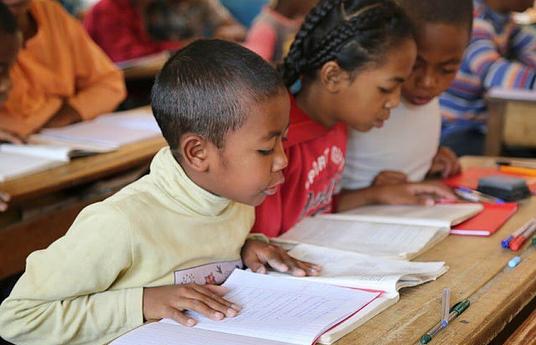What is the problem we are addressing?
The problem is related to understanding and memorizing the multiplication table for deaf and hearing students. From a practical standpoint as a math teacher, I found that many male and female students have trouble understanding and memorizing the multiplication table, especially when multiplying large numbers (six to nine); which are basic multiplications for solving two-digit problems or more than that. Students encounter difficulty in finding the result of multiplication by using drawing, counting, or retrieving information. This pushed me think of a way to make it easier to memorize and understand the multiplication table in a practical and simple method, and not to merely rely on abstract memorization. I, therefore, created a program that does not depend on memorization at all, but rather on comprehension only by using numbers in sign language.
What is our solution?
The solution is to apply numbers in sign language to principles of multiplication from one to nine. The sign language multiplication table is a method of understanding the multiplication tables by using numbers in sign language, in which the fingers of the two hands are used in representing the numbers. Each number is represented by using the fingers of one hand. The two hands represent two numbers, and when multiplying two numbers a special operation is used to represent and transform numbers to find the result.
The sign language multiplication table program is a very useful program for deaf people, as well as non-deaf people from all age groups. It does not need memorization. It only needs understanding. It is a fun way for students, and it also keeps the students’ imagination skill active; as things are done with the fingers of own hands.
The sign language multiplication table consists of three laws that are used to find the result of the multiplication process by using the multiplication table in sign language. The first law is for numbers (1,2,3,4,5) with (1,2,3,4,5), and the second law is for (1,2,3,4,5) with (6, 7, 8, 9), and the third law is for numbers (6, 7, 8, 9) with (6, 7, 8, 9). The aim of this method is to facilitate the understanding of the multiplication table and quickly finding of the result in order to save the student time and effort.
An overview of our impact
I applied the method to deaf and hearing students, and it made great success as the students excelled in the skills related to the multiplication mechanism. It also enabled students to solve multiplication problems easily and conveniently. Their academic performance developed, which led to a rise in their level of education. I used this method with students and presented it in the form of workshops to other schools, and it helped hearing students understand the multiplication table and its use in mathematics. Moreover, I authored a book entitled (Qatari Sign Language Multiplication Table), and obtained the intellectual rights from the Ministry of Commerce and Industry. The book was distributed to schools, and the idea was spread on social media (Twitter, Facebook, Instagram, and others). I have started with this idea in 2014 and until now am still applying it when training the female students and teachers.
Examples of implementation
- I taught deaf students in the Audio Education Complex the sign language multiplication table with its three stages. I employed educational aids (cards, boards, and various educational aids) that I designed to help students understand the laws of the sign language multiplication table. The activities were carried out in spare/extra classes and mathematics classes. This was reflected positively on the level of students’ academic achievement.
- I spread the idea by giving workshops to primary schools and cultural centers in Qatar and outside Qatar; such as Kuwait, in which I trained students and teachers on the three laws.
- I was hosted by Qatari TV channels (Al Rayyan and Qatar TV channels) to explain the idea.
- I recorded some videos explaining the laws and created my own YouTube channel to spread the idea globally.
- I spread the idea through various means of communication such as Twitter, Instagram, Facebook, and others.
What are our future goals?
- Spreading the idea locally and internationally to benefit all deaf and hearing people.
- Establishing a specialized center offering training on this method to enable teachers and students understand the multiplication table in sign language and to spread the idea.
- Including the idea of sign language multiplication table in the schools curricula after presenting it to the Ministry of Education and Higher Education.
- Improving the YouTube channel dedicated to sign language multiplication table to reach millions of viewers.
- Conducting training workshops for male and female teachers in all schools in Qatar and the Arab countries.
- Participating in the training centers of the ministry.
- Finding innovative solutions to understand multiplication problems of two-digits or more.
How can someone else implement it? What do they need?
- People can easily use it if they learn to use the three laws of the sign language multiplication table.
- Users need a training session to understand the steps for implementing and using the three laws and how to use hands and fingers in the representation of numbers in sign language.
- Users should have the textbook that I authored to help them understand the mechanism of the laws; as a printed scientific material that explains the three laws.
- Users should watch the videos on the YouTube channel to help them understand the laws. These videos provide them with the scientific material that can be used in a training workshop.
- Users should have educational aids that help them in the application and explanation phases. This helps the students in the elementary stage comprehend and apply the table quickly.



